This article was co-authored by Jason Myerson, DPT, DMT, OCS, FAAOMPT. Jason Myerson is a Physical Therapist and a Certified Orthopedic Specialist. He is affiliated with Performance Physical Therapy & Wellness with clinics located in Connecticut. He serves as adjunct faculty in the Physical Therapy Department at Quinnipiac University. Jason specializes in helping active people get back to hobbies, activities, and sports they love while utilizing an integrated approach to wellness. He holds an MA in Physical Therapy from Quinnipiac University and a Doctorate in Physical Therapy (DPT) from Arcadia University. He is Residency and Fellowship trained in Orthopedic Manual Therapy, achieved a Doctorate in Manual Therapy (DMT) and became a Fellow of the American Academy of Orthopedic Manual Physical Therapists (FAAOMPT).
There are 13 references cited in this article, which can be found at the bottom of the page.
This article has been viewed 39,094 times.
Most cases of leg muscle pain are due to overuse or injury, such as a strain or sprain. Fortunately, minor injuries can be easily treated at home and usually heal within 1 to 2 weeks. Rest, ice, compression, and elevation, or the RICE protocol, are the key elements of treatment. If necessary, take an over-the-counter pain reliever according to the label's instructions. Once you start to feel better, you can do light stretches and gradually resume normal activities. While minor muscle pain is easy to handle at home, you should see a doctor for a serious injury, severe pain, or pain with no obvious cause.
Steps
Caring for Your Sore Muscle
-
1Treat minor pain at home, but see a doctor for serious injuries. Sore muscles or a minor strain can be treated at home, and pain usually goes away within a week. However, you'll need to see a doctor if you've suffered a serious injury or if you have severe pain with no obvious cause. Seek medical attention if you experience symptoms such as:[1]
- Severe pain, swelling, or widespread bruising
- The inability to move your leg or bear weight
- A joint that seems out of position
- A popping sound when you suffered the injury
- Moderate pain that doesn't improve after 2 to 3 days
-
2Take it easy if you're sore after a workout. If you're sore after a tough leg day workout, rest and avoid demanding activities. Icing the overused muscle, elevating it, and taking an over-the-counter pain reliever can also help, so follow the steps you'd take in treating a minor injury. You should feel better within a couple of days.[2]
- To prevent sore muscles after a workout, warm up and cool down with a brisk walk or jog. Avoid exceeding your limits, and drink plenty of fluids before, during, and after exercise.
Advertisement -
3Rest your leg as much as possible. Follow the RICE protocol (Rest, Ice, Compression, Elevation) to relieve minor to moderate muscle pain due to injury. The first step is to avoid using the sore muscle and to keep your leg as still as possible. Stop all activity that causes pain and, if possible, take a day off to rest in bed or on the sofa.[3]
- If you need to walk around, a cane or crutches can help keep weight off your sore leg.
-
4Apply ice for 10 to 15 minutes several times a day. Wrap ice or an ice pack in a cloth instead of applying it directly to your skin. Ice the area for 10 to 15 minutes right away after an injury and again every hour for the rest of the day. For the next 2 to 3 days, ice your sore muscle every 3 to 4 hours.[4]
-
5Wrap the area with a bandage or sports tape. Wrap the affected muscle and either your knee or ankle with an ACE bandage or elastic sports tape. If your quadriceps or hamstring are sore, wrap your thigh, and wrap your lower leg if your calf muscles hurt. Each of these muscle groups cross the knee joint, so you should also wrap your knee to keep it in a relaxed, neutral position.[5]
- If possible, have a medical professional show you how to wrap or bandage your leg for the first time. They can teach you how to properly put on your support bandages in a way that helps your leg without impeding circulation.
- If your lower calf muscles or Achilles tendon are injured, wrap your ankle.
- Wrap snugly but gently, and don't cut off your circulation. Cross at least 3 layers of tape over the affected area and, if the bandage doesn't have a strip of Velcro, secure it with medical tape or a clip.
- A serious muscle strain or sprain might require an immobilizing splint or boot.
-
6Elevate your leg to reduce swelling. Lie on your back and place pillows under your leg. Try to keep it raised higher than the level of your heart. Elevation reduces swelling and can help relieve pain.[6]
- If possible, rest in bed or on your sofa with the sore muscle elevated above your heart for the first day after getting injured.[7]
-
7Take an over-the-counter pain reliever, if necessary. If ice and compression aren't enough to ease your pain, take ibuprofen (Advil and Motrin) or acetaminophen (Tylenol). Follow the instructions on the bottle, and don't take more than the recommended amount. If you have heart issues, kidney disease, or other medical conditions, consult your doctor before taking any medication.[8]
- Some medical professionals advise against taking pain relievers for muscle injuries, especially for longer than 24 hours after an injury. For a serious injury, ask your doctor for advice about pain relievers and your healing process.
Resuming Activity
-
1Resume light physical activity when your pain has decreased. Attempt light activity, such as stretching and walking, only when you start to feel better. If stretching, bearing weight, or any other activity cause pain, stop doing it immediately.[9]
- For mild strains, it could take up to 5 days before you're able to begin stretching and walking. For moderate to severe strains or sprains, it could take 10 days or more.[10]
- If you saw a doctor for your injury, follow their instructions for stretching and exercising your muscle.
- Light physical activity can increase blood flow to the tissue in your leg and help loosen it up.[11]
-
2Do light stretches that target the affected muscle. Don't overexert yourself, and stop stretching if you experience pain. Inhale as you move into a stretch, exhale as you hold the stretch, and use slow, steady motions instead of bouncing or jerking. Remember it's best to consult your doctor before stretching or resuming activity, especially if you've suffered a moderate to severe strain or sprain.[12]
- Do easy stretches for three days then, if you don't experience pain, gradually work your way up to more demanding activities.
-
3Do three sets of quadriceps stretches throughout the day. If your quadriceps, or front thigh muscles, were affected, stand up straight and bend your knee backward to bring your heel toward your rear end. Place your hand on a wall to keep your balance, and hold the stretch for 10 to 20 seconds. Do a set of three stretches three times a day.[13]
-
4Do one to two sets of hamstring stretches per day. To stretch your hamstring, or the back of your thigh, lie on your back with your knees slightly bent. Keeping your knee bent, bring your leg toward your chest until you feel a gentle stretch at the back of your thigh. Hold the stretch for 10 seconds, and do a set of three stretches one to two times a day.[14]
-
5Do 10 to 20 active calf stretches. To gently stretch your calf muscles, sit on the floor with your legs straight in front of you. Pull your toes and foot toward your torso until you feel a stretch in your calf. Hold the stretch for 2 seconds, then do a total of 10 to 20 repetitions.[15]
-
6Increase your activity level gradually. After three days of light stretching with no pain, you can slowly start getting back to your normal activities. Try doing easy squats and lunges, and go for 15 or 20 minute walks. Gradually move on to more demanding activities, such as jogging or running, after a few days of pain-free walking.[16]
- Take your time and don't try to run or lift heavy objects too soon. Even if you don't experience pain, you need to give your muscle enough time to heal. Otherwise, you might re-injure yourself.
Seeking Medical Treatment for Muscle Pain
-
1Rule out other issues if you haven't suffered an injury. Schedule a doctor's appointment if you have persistent moderate to severe pain with no obvious cause. Tell them when your pain started and report any related symptoms. They'll perform a physical exam and order tests to make an accurate diagnosis.[17]
- For muscle pain not due to an injury, the best treatment option will depend on the underlying cause. Talk to your doctor about the type of pain you are experiencing. Consider factors like possible cause, whether the pain is in one or both legs, is a dull or sharp, consistent or intermittent. This will help your doctor provide the best diagnosis.
- Remember that you should also see your doctor if you've suffered an injury and have symptoms of a serious strain, sprain, or fracture.
-
2Ask your doctor if you need an immobilizing splint or crutches. If you've suffered a serious injury, your doctor might give you a splint or boot to immobilize the affected area. You might also need crutches, which will allow you to walk without putting weight on the injured leg.[18]
-
3Get a referral to a physical therapist, if necessary. Without professional physical therapy, serious injuries can lead to long-term joint issues. Ask your doctor if you need a physical therapist and, if necessary, ask them to recommend a licensed professional.[19]
- If you don't need a physical therapist, your doctor will provide you with stretches and exercises to rehabilitate your injured muscle. Follow their instructions to help prevent long-term complications.
-
4Discuss surgical repair if you've suffered a severe injury. Sometimes, severe muscle tears and sprains need to be corrected surgically. If necessary, your doctor will refer you to an orthopedic specialist. Attend a preliminary appointment with them, schedule the procedure, and follow their preoperative and after-care instructions.[20]
- In most cases, you'll be able to go home the day of surgery. You'll likely wear an immobilizing splint or boot for 4 weeks, then begin physical therapy. Recover often takes around 6 to 12 weeks. While rare, the most severe muscle injuries can take at least 6 months to completely heal.
How Do You Recover From A Hamstring Injury?
References
- ↑ https://www.health.harvard.edu/pain/muscle-strain
- ↑ https://www.nhs.uk/live-well/exercise/pain-after-exercise/
- ↑ https://www.uofmhealth.org/health-library/tw4354spec
- ↑ https://www.uofmhealth.org/health-library/tw4354spec
- ↑ https://www.ncbi.nlm.nih.gov/pmc/articles/PMC2697334/
- ↑ https://orthoinfo.aaos.org/en/diseases--conditions/muscle-strains-in-the-thigh/
- ↑ https://medlineplus.gov/ency/article/000042.htm
- ↑ https://medlineplus.gov/ency/patientinstructions/000551.htm
- ↑ https://medlineplus.gov/ency/patientinstructions/000551.htm
- ↑ http://www.sportsinjuryclinic.net/sport-injuries/thigh-pain/quadriceps-strain
- ↑ Jason Myerson, DPT, DMT, OCS, FAAOMPT. Physical Therapist & Certified Orthopedic Specialist. Expert Interview. 15 April 2020.
- ↑ https://medlineplus.gov/ency/patientinstructions/000551.htm
- ↑ http://www.sportsinjuryclinic.net/sport-injuries/thigh-pain/quadriceps-strain/quad-stretching
- ↑ http://www.sportsinjuryclinic.net/sport-injuries/thigh-pain/hamstring-strain/hamstring-strain-stretching-exercises
- ↑ http://www.sportsinjuryclinic.net/sport-injuries/ankle-achilles-shin-pain/calf-strain/calf-strain-stretching-exercises
- ↑ https://medlineplus.gov/ency/patientinstructions/000551.htm
- ↑ https://www.health.harvard.edu/pain/when-walking-makes-your-legs-hurt
- ↑ https://www.ncbi.nlm.nih.gov/pmc/articles/PMC2697334/
- ↑ https://orthoinfo.aaos.org/en/diseases--conditions/muscle-strains-in-the-thigh/
- ↑ https://www.health.harvard.edu/pain/muscle-strain
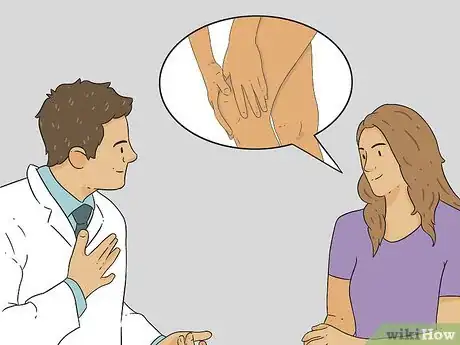
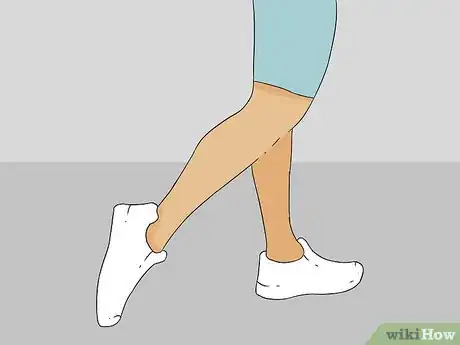
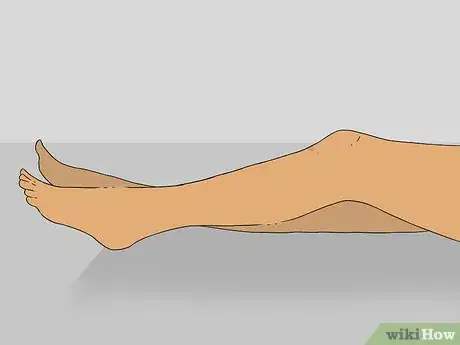


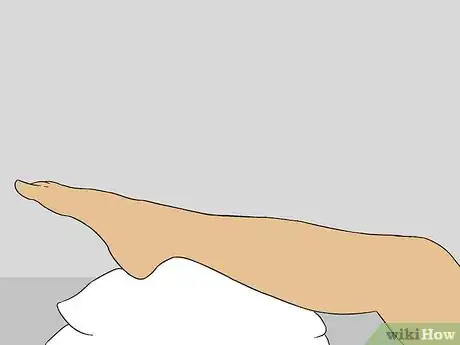
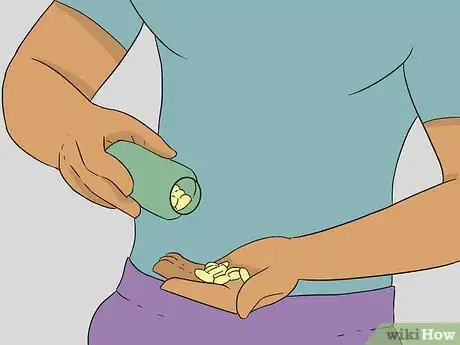
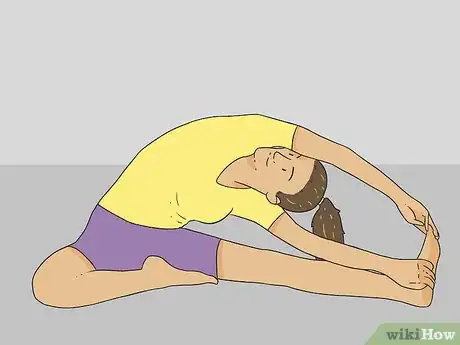



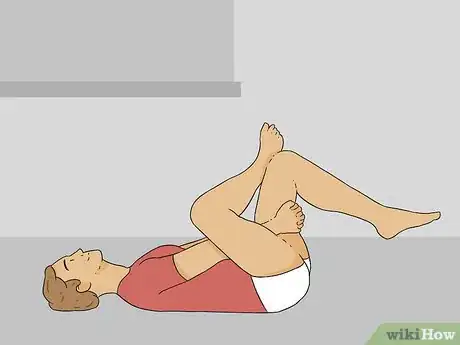
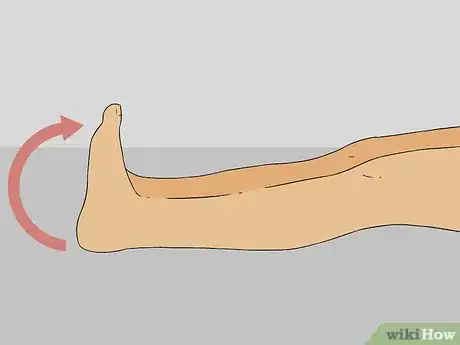
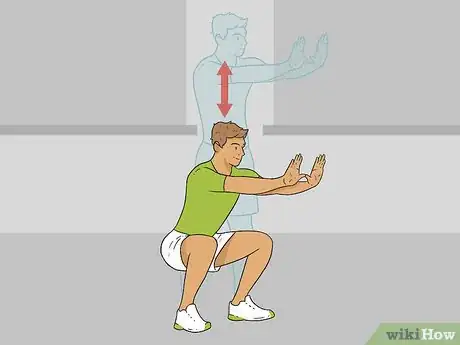
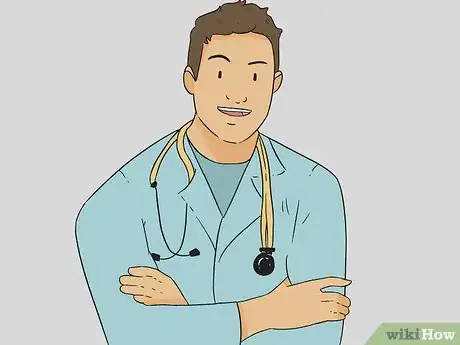
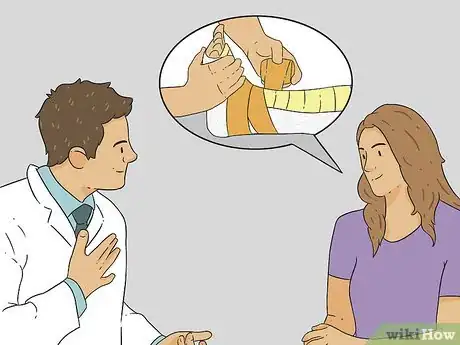

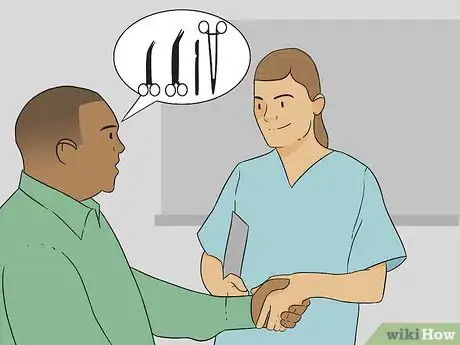
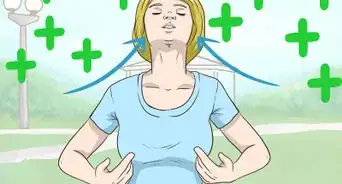
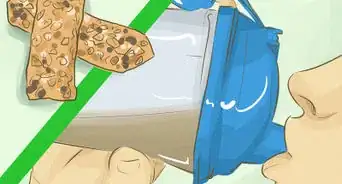
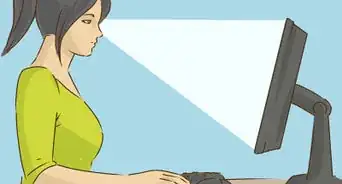
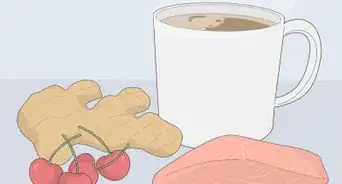
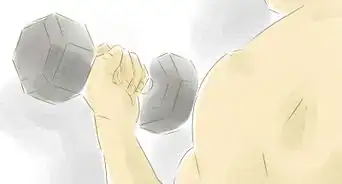
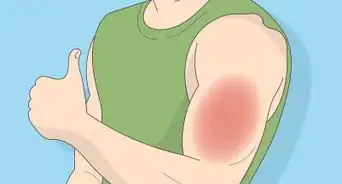

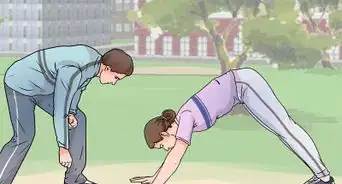






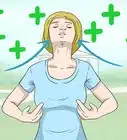
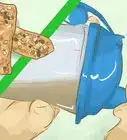
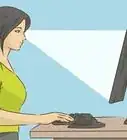





































Medical Disclaimer
The content of this article is not intended to be a substitute for professional medical advice, examination, diagnosis, or treatment. You should always contact your doctor or other qualified healthcare professional before starting, changing, or stopping any kind of health treatment.
Read More...